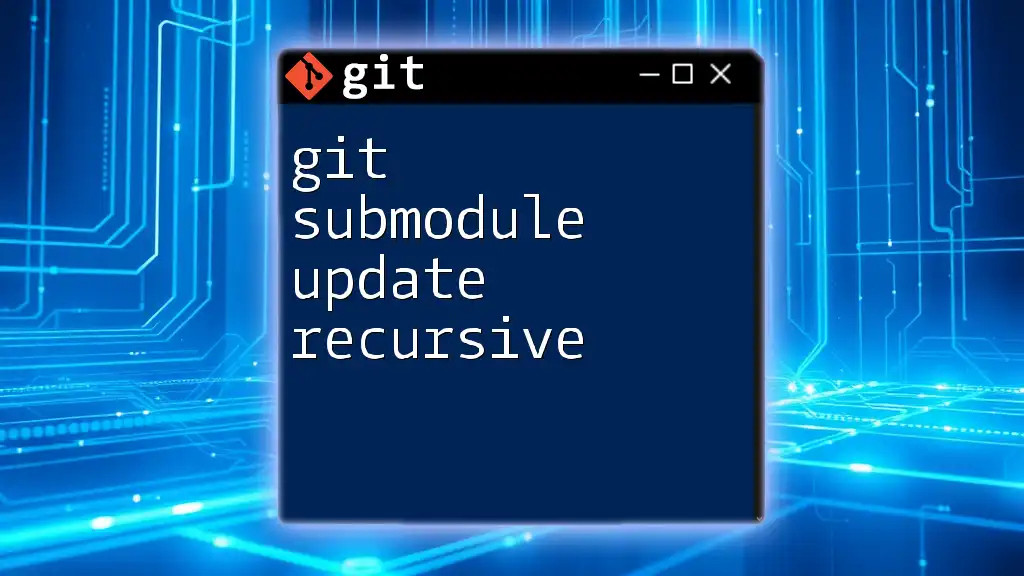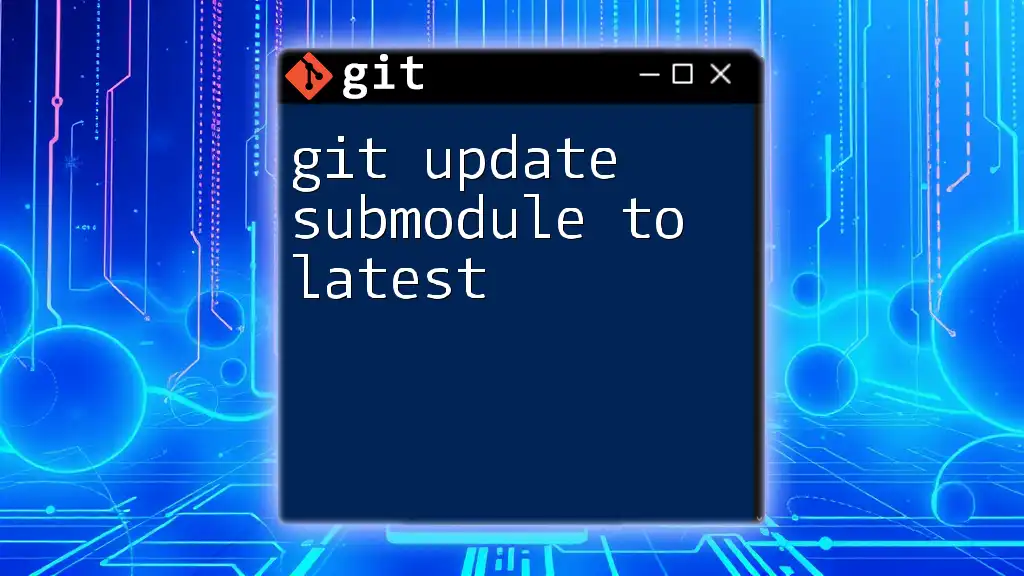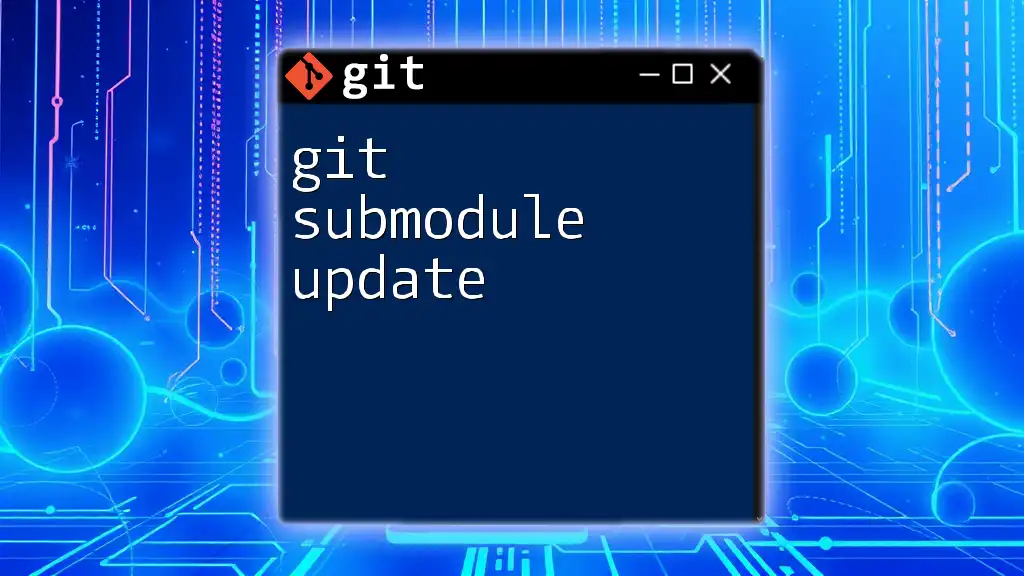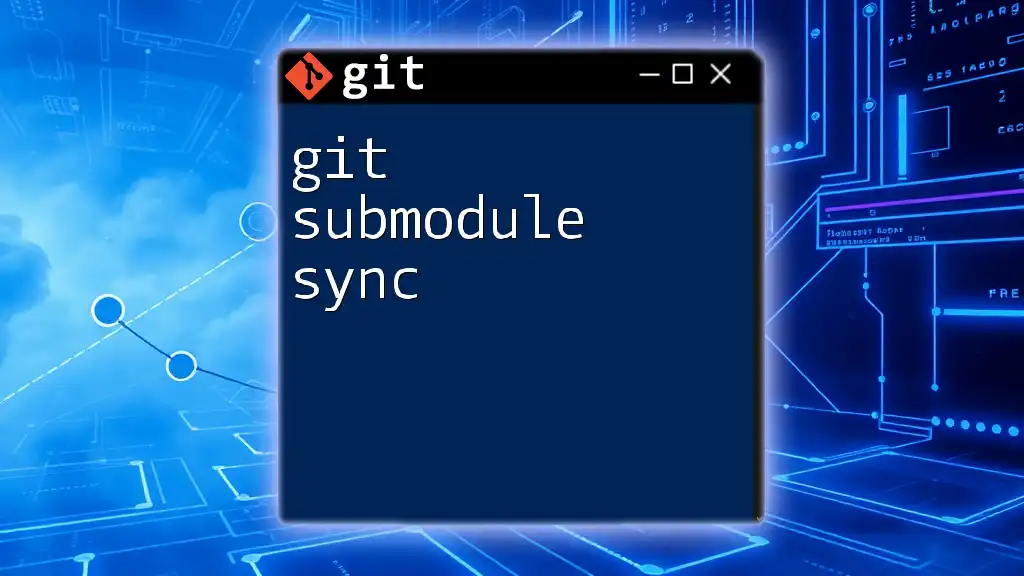The error "git submodule already exists in the index" occurs when you attempt to add a submodule that has already been initialized or added to the repository; you can resolve this by checking your submodule status or resetting the index.
Here's how you can attempt to resolve it using the following commands:
git submodule status
git rm --cached path/to/your/submodule
git submodule add <repository-url> path/to/your/submodule
Understanding Git Submodules
What are Git Submodules?
Git submodules are repositories nested inside another Git repository. They allow you to include and manage external libraries or modules as dependencies within your main project. By using submodules, you can maintain a connection to specific commits of an external repository, ensuring that your main project always uses the correct version of the module.
Why Use Submodules?
Submodules offer several important benefits:
- Dependency Management: They help you manage dependencies effectively, ensuring that your main project isn't held back by changes in upstream repositories.
- Code Organization: Submodules keep your code organized, especially in large projects that require collaboration from various teams and utilize multiple libraries.
Common Use Cases for Submodules
Common scenarios that justify the use of submodules include:
- Project Dependencies: When your project relies on other libraries or frameworks, submodules allow you to include them easily.
- Library Management: Centralizing and managing shared code across multiple projects can be efficiently done using submodules.
- Reusing Code Across Different Projects: If you have common code that should be used in various projects, submodules enable you to maintain a single source of truth for that code.

The Error: "git submodule already exists in the index"
What Does This Error Mean?
The message "git submodule already exists in the index" indicates that Git is aware of the submodule you are trying to add, but it has already been initialized or exists in the index. This means there's a conflict between your attempt to add a new submodule and the existing entry that Git is tracking.
Common Scenarios Leading to This Error
Several scenarios can trigger this error, including:
- Adding a Submodule that’s Already Been Initialized: If a submodule was previously added, attempting to add it again without properly managing its state can lead to conflicts.
- Changes Made to the `.gitmodules` File: Manual changes to this configuration file without updating the Git index can create mismatches.
- Incorrect Paths or URLs in Submodule Configuration: Mistakes in the URL or path specified for the submodule can also lead to this error.

Troubleshooting the Error
Step-by-Step Fixes for "Submodule Already Exists" Error
Verify Existing Submodules
Begin by confirming which submodules exist in your project. Use the command:
git submodule status
This command will list all the initialized submodules along with their current commit state. Check to see if the submodule you intend to add is already listed.
Removing the Existing Submodule Entry
If you confirm that the submodule already exists, you'll need to remove it from the index. This action does not delete the submodule's files on your disk; it merely untracks it. Use the command:
git rm --cached path/to/submodule
Tip: After running this command, check your Git status with:
git status
This will show you that the submodule has been removed from the staging area.
Re-adding the Submodule Correctly
Next, you can add the submodule back into your project correctly. Make sure you specify the correct URL and path. Use the following command:
git submodule add URL path/to/submodule
Expected Output: This command will clone the submodule from the specified URL and set the correct mapping in both the `.gitmodules` file and the Git index.
Cleaning Up the Git Configuration
After adjusting your submodules, you may need to clean up your Git configuration to ensure everything is in order. Check your `.git/config` to confirm that the submodule settings are accurate. You should see an entry similar to this:
[submodule "path/to/submodule"]
path = path/to/submodule
url = URL
If necessary, make any adjustments to ensure that the path and URL align with the actual submodule location.

Best Practices When Working with Submodules
Regular Status Checks
Make it a practice to frequently check the status of your submodules to ensure everything is up-to-date and aligned. You can do this with:
git submodule update --remote
This command fetches updates from the specified submodule URLs, helping to keep your project current.
Keeping Submodules Up to Date
To pull the latest changes from your submodules and ensure you're working with the latest code, use the following command:
git submodule update --init --recursive
This command initializes your submodules and updates them to their latest commits.
Documenting Submodule Dependencies
Clear documentation is crucial when working with submodules. Maintain an updated README file or documentation that outlines all dependencies and instructions for managing submodules. This practice ensures that all team members understand how to work with the project's structure and can easily navigate submodule management.

Conclusion
Summary of Key Points
In summary, dealing with the error "git submodule already exists in the index" involves a series of verification and corrective steps. Verifying the existing status of submodules, properly managing the Git index, and maintaining a clean configuration can prevent and resolve issues.
Encouragement to Explore More Git Commands
We encourage readers to continue learning about Git commands and best practices. Mastering the nuances of Git can lead to smoother project management and collaboration.

Additional Resources
Helpful Git Commands and Links
For those looking to deepen their understanding of Git, explore the official Git documentation, and consider additional resources that detail advanced Git commands and submodules.

















